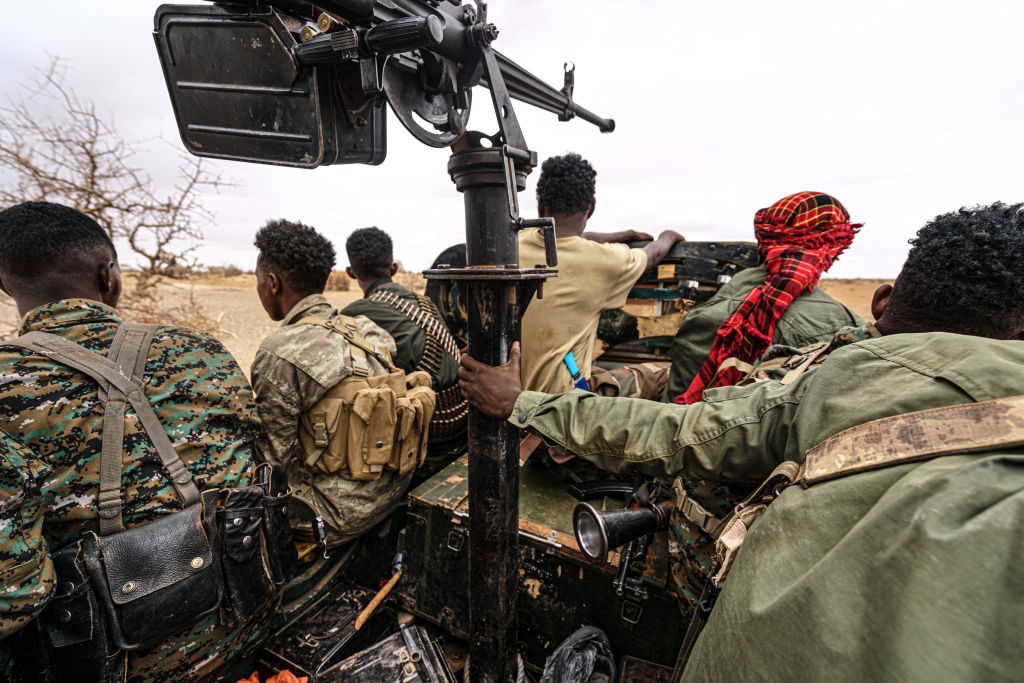ADF STAFF
Somali national forces and Jubaland regional forces in early March killed scores of al-Shabaab fighters during operations in the Lower Juba region.
The battles were mainly in Bahar Saaf, Haji, Malaylay, Turdho and other heavily forested areas where the terrorists operate.
“The national forces, alongside Jubaland’s heroes, have engaged the Khawarij for four consecutive days,” Abdirahman Yusuf Aladala, Somalia’s deputy minister of information, said in a report by Somali news website Hiiraan Online. “We have successfully eliminated over 50 militants, detained 20 and reclaimed numerous territories.”
Somali national forces, regional governments and clan militias, locally known as “Ma’awisley,” have stepped up operations against al-Shabaab in a bid to drive the terrorists from the country. In recent months, Somali security forces gained ground against the group, mainly in central Somalia.
The Lower Juba operations came about three weeks after al-Shabaab claimed responsibility for an attack on the General Gordon military base in Mogadishu that killed four Emirati troops and a Bahraini military officer.
Operations Coincide with ATMIS Drawdown
Somalia’s ongoing efforts to eradicate al-Shabaab coincide with the departure of troops from the African Union Transition Mission in Somalia (ATMIS), which includes troops from Burundi, Djibouti, Ethiopia, Kenya and Uganda.
In the drawdown’s first two phases, 5,000 troops left Somalia and 13 military bases were turned over to Somali forces. Officials initially expected to complete the second phase of the ATMIS withdrawal at the end of September. However, ongoing al-Shabaab offensives, coupled with the retreat of forces from areas previously captured, persuaded the Somali government to ask for a delay in the drawdown.
Planning for Phase 3 of the drawdown began in February. This phase is expected to include the departure of 4,000 more troops in June. All ATMIS troops are expected to exit the country by the end of 2024.
Despite Somalia’s gains, al-Shabaab is brutally resilient, and the group is finding new ways to finance its operations.
Some observers believe Al-Shabaab militants in Somalia’s northern Sanaag region have reached a deal to provide protection to pirates in exchange for 30% of all ransom proceeds and a cut of any loot, Emirati newspaper The National reported.
The deal could provide al-Shabaab with critical funds after the Somali government clamped down on its other illegal sources of funding and froze its bank accounts. The terrorists also are suspected of negotiating with pirates and Houthi rebels to acquire weapons.
Somali pirates in December attacked four vessels as international navies relocated from the Indian Ocean to the Red Sea, ending a six-year lull in major piracy incidents. A Bangladesh-flagged vessel bulk carrier was hijacked east of Somalia in mid-March.
According to TRT World, the collaboration with al-Shabaab is further evidenced by pirates wielding advanced weaponry, possibly acquired through the terrorist group’s weapons smuggling network.

